Abstract
This article presents a case study on the hydrodynamic optimization of a fleet of working fishing vessels, with the goal of reducing fuel consumption and increasing operational efficiency through targeted hull modifications. The client, a shipowner operating several traditional fishing ships, sought to evaluate and enhance vessel performance by retrofitting bulbous bows and extending the hull aft. The optimization process began with a full 3D scan of the vessel hulls, and through the use of in-house software, the raw point cloud data was automatically converted into high-quality CFD-ready meshes. A series of computational fluid dynamics (CFD) simulations were conducted to analyse the existing performance and to assess the impact of proposed modifications across a range of speeds. Multiple types of bulbous bows were designed, parametrized, and tested, each tailored to different wave and flow conditions, with particular attention paid to wave interference, volume distribution, and pressure fields. Iterative analysis combining bulb design and a 3-meter stern extension ultimately led to a reduction of total resistance by up to 19% at top speed. These improvements represent a significant opportunity for fuel savings and enhanced vessel performance, and the results form the basis for detailed engineering and class documentation now in development.
1. Introduction
Fuel efficiency and operational performance are critical concerns for modern-day fishing fleets. In an industry with tight margins and growing regulatory and environmental pressures, even modest improvements in hull efficiency can translate into substantial operational and financial benefits. One of the key strategies to achieve these improvements lies in optimizing the vessel’s underwater form, particularly the bow and stern sections.
This paper outlines a structured hydrodynamic optimization project conducted on a working fishing vessel, showcasing our approach that combines technical precision with tailored, hands-on design iteration. This type of high-resolution optimization—refining individual hull elements such as bulbous bows, stern geometries, and pressure distribution zones—is a one of specialties of our studio. While much of our work traditionally focuses on high-performance yachts, we apply the same design philosophy and toolset to working ships, where small refinements can yield significant real-world advantages. From 3D scanning to CFD validation and design integration, our method emphasizes accuracy, efficiency, and custom solutions aligned with each vessel’s operational profile.
2. Project Scope and Objectives
- The client approached us with the following goals:
- Assess the current hydrodynamic performance of their vessels.
- Determine the maximum attainable speed with the existing propulsion system.
- Investigate the effects of a bulbous bow and a stern extension on overall resistance and trim.
- Provide engineering documentation for classification society approval.
The vessels in question are traditional fishing ships (former US shrimp boat) with conventional displacement hulls, typically operating at speeds between 6 and 10 knots. With operational schedules dependent on weather and fish migration patterns, improved fuel efficiency and increased top speed offer tangible operational advantages.
3. Methodology
3.1.Hull Digitization and CFD Mesh Preparation
The optimization process began with a complete 3D scan of the ship’s hull. Using this digital model, we prepared a high-quality surface mesh suitable for CFD analysis. Particular attention was paid to capturing the underwater hull geometry accurately to ensure reliable simulation results.
3.2. Baseline Performance Evaluation
A series of CFD simulations were conducted on the original hull form across a speed range of 6 to 11 knots. These simulations were then benchmarked against operational data collected by the client, including GPS-based speed and fuel consumption logs. The comparison validated the accuracy of our simulation framework.
3.3. Flow and Pressure Distribution Analysis
We then performed a detailed hydrodynamic analysis of the flow field and pressure distribution under the hull. This helped us identify areas of high resistance and negative pressure zones that could be addressed through design modifications.
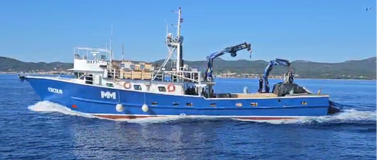
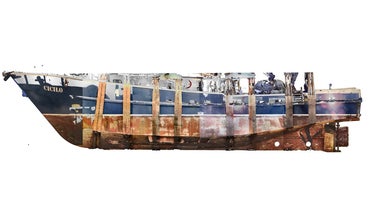
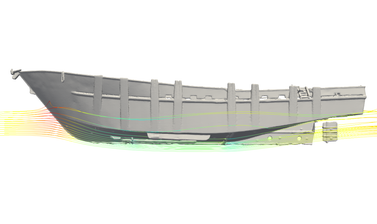
4. Design Iterations and Performance Improvements
4.1. First Iteration: Wave-Piercing Bulb
Our first modification introduced a simple wave-piercing bulbous bow. This shape, designed to reduce bow wave formation, resulted in a reduction of total resistance by approximately 7% at cruise speed (8 knots) and nearly 10% at top speed (10 knots).
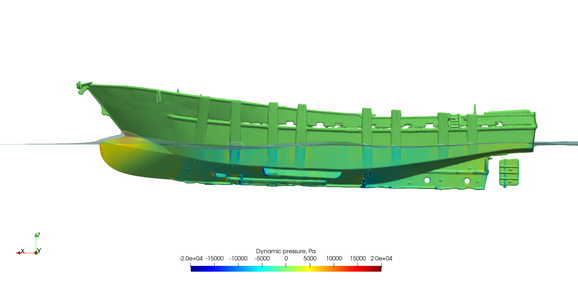
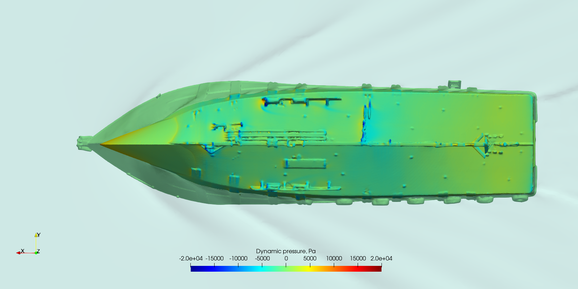
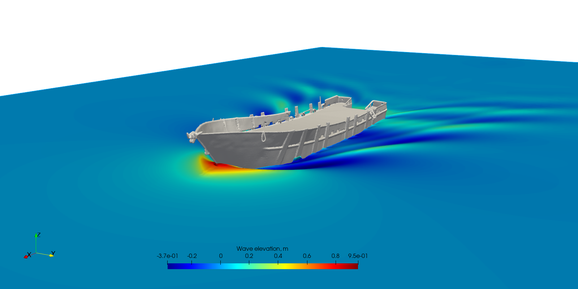
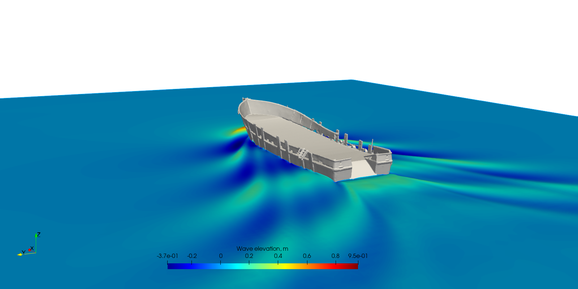
4.2. Second Iteration: High-Volume Bulb Design + Stern Extension
In the second iteration, we developed a larger bulb with increased longitudinal volume distribution. We also extended the hull aft by 3 meters to streamline flow separation at the stern. CFD results showed a total resistance reduction of 19% at top speed, as well as improvements in longitudinal trim and a reduction in dynamic draft.
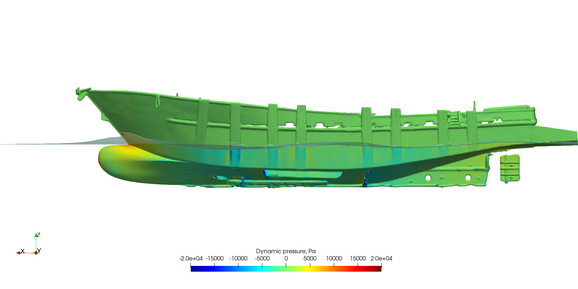
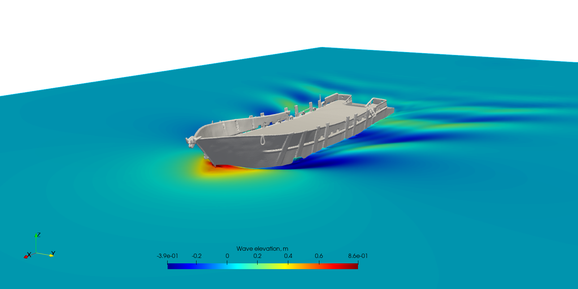
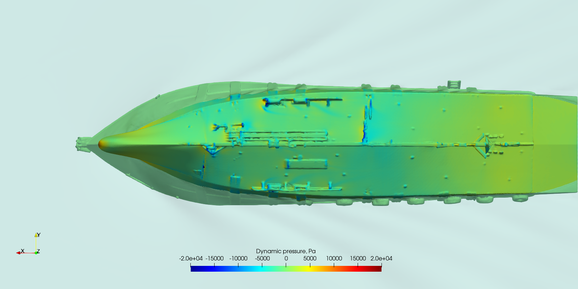
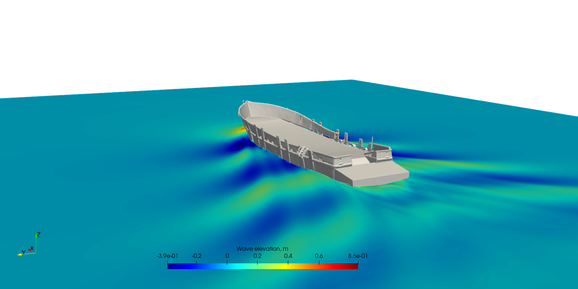
4.3. Final Iteration: Rockered Extension and Large Bulb
In the final iteration, we combined a large-volume bulb with a slightly rockered stern extension to fine-tune the flow. However, this configuration yielded no significant additional gains beyond the 19% resistance reduction achieved previously which gave us proof of achieving the maximum efficiency within the scope of the task.
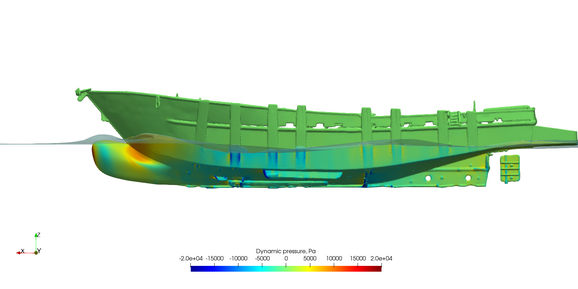
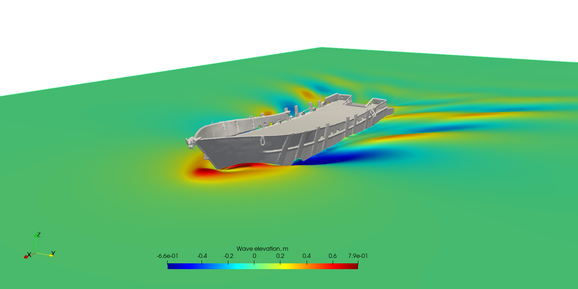
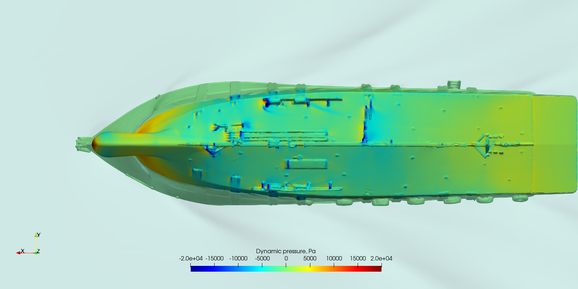
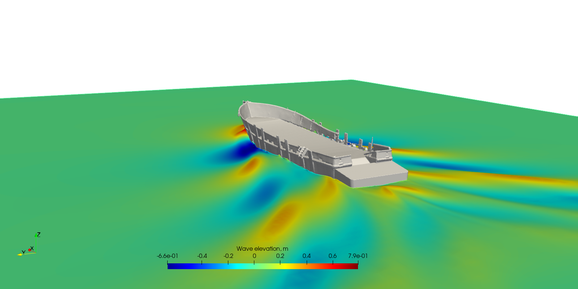
5. Conclusion
This case study illustrates how targeted hull form optimization using CFD and iterative design can significantly enhance the performance of working vessels. The total reduction of up to 19% in resistance offers considerable fuel savings and improved operational flexibility for the client, without altering the propulsion system.
The final step of the project involves the preparation of detailed construction and classification documentation, paving the way for real-world implementation of the retrofits.



Add comment
Comments